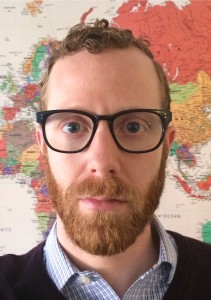As a follow up to our post from Marilyn Watkins this morning on education funding, we’re cross-posting a recent op-ed from The Seattle Times by a teacher at Rainier Beach High School. Enjoy.
Recently, a colleague and I visited another Seattle high school. When we were introduced to the class as teachers from Rainier Beach High School, a ninth-grade boy with a friendly face asked, “You’re from Rainier Beach? Do you like working there? Isn’t it a bit … sketchy?”
This was a disappointing but familiar response. For some in our city, “Rainier Beach” is code for the kinds of race and class stereotypes heaped on similar schools and communities across the country. It is Seattle’s local version of epithets like urban, inner-city, troubled, failing.
There is a history behind these impressions: For decades our school was neglected by institutions responsible for supporting it and disparaged by a cross-section of Seattleites, many of whom had never set foot inside.
But the reality of Rainier Beach High School reflects a different story. For the past three years, I have been proud to work as a teacher and International Baccalaureate Program coordinator here, and I have known it as a school of admirable strengths and resiliency. I work in a school serving one of the most diverse zip codes in the nation, where nearly 90 percent of students live below the poverty line and close to half learn English as a second, third, fourth and — I am not exaggerating — even fifth language. I work surrounded by warm, capable, intellectually curious students in a safe, welcoming school. I work alongside committed colleagues in a school community capable of remarkable things.
Our school-wide effort to implement an open-access IB program — currently with a 95-percent participation rate among 11th graders — is one example among many. Our coordinated work is paying off measurably with increasing enrollment and test scores and, perhaps more importantly, in the tangible sense of momentum felt around the building.
Some of the other ways we are working to ensure our students receive an equitable and high quality education are simple best practices: setting aside time for teachers to collaborate and coordinate instruction; creating structures for community and parent partnerships so that all parents are welcomed and included; giving students access to on-site academic coaches, tutors, health care professionals and a social worker; and providing after-school opportunities for study and public service.
These solutions don’t require handing students new iPads or publicly shaming “bad” teachers. They don’t involve handing over our paramount duty to educate children to private contractors or tallying the statistics that allow us to treat American education like a multiple choice horse race with the rest of the world. These are solutions that require long-term effort, slow incremental growth and sustained attention — but they are the solutions that actually work. And they are not free.
We are accomplishing all of this under the shadow of what our state Supreme Court recently ruled is our legislature’s failure to adequately fund public education. None of our work would be possible without the influx of resources generated by a combination of community partnerships and the tireless lobbying of our PTSA. These have brought us several grants that pay for the “extra” supports and initiatives necessary to fulfill our students’ basic education needs. However, these temporary funds are subject to the fickle rhythms of election cycles and philanthropists’ giving. Within two years, funding for our social worker, tutors and teachers’ collaboration time, among other essentials, will be gone.
Our students and their needs will still be here.
We can’t rely on the money more affluent districts and schools raise through property levies and PTSA fundraisers. Extra funding allows these schools to pay for things to make their academic programs sustainable and inclusive, such as the seven-plus period schedule that accommodates the full set of IB classes and provides students with enough course options to adequately prepare them for college. This is one more example of the disturbing trend of forcing public schools to constantly apply for grants and private money, thereby taking staff time away from educating children and deepening inequities between schools.
The turnaround of providing equity for a neglected school requires long-term heavy lifting. Despite the challenges we face at Rainier Beach, we are more than doing our part. It is well past time that the legislature, business leaders and other keepers of the public purse do theirs. They must look beyond the easy PR generated by photo opportunities with poor students of color receiving novelty-sized checks and commit to sustained public funding that will ensure an equitable and rigorous education for all students in our state. No more excuses, no more stalling.
Our state constitution demands it, and my students deserve it.
Colin Pierce has been teaching in International Baccalaureate schools for seven years and coordinating the IB Diploma Program for six years. He currently teaches 11th-grade IB Language and Literature and Theory of Knowledge in addition to being IB Coordinator and Building Leadership Team chair at Rainier Beach High School.
More To Read
January 13, 2025
Meeting the Moment: EOI’s 2025 Legislative Agenda
This session, lawmakers must pass multiple progressive revenue solutions to fund the programs and services that help make Washington communities affordable.
January 6, 2025
Initiative Measure 1 offers proven policies to fix Burien’s flawed minimum wage law
The city's current minimum wage ordinance gives with one hand while taking back with the other — but Initiative Measure 1 would fix that
November 1, 2024
Accessible, affordable health care must be protected
Washington’s elected leaders can further expand essential health care

